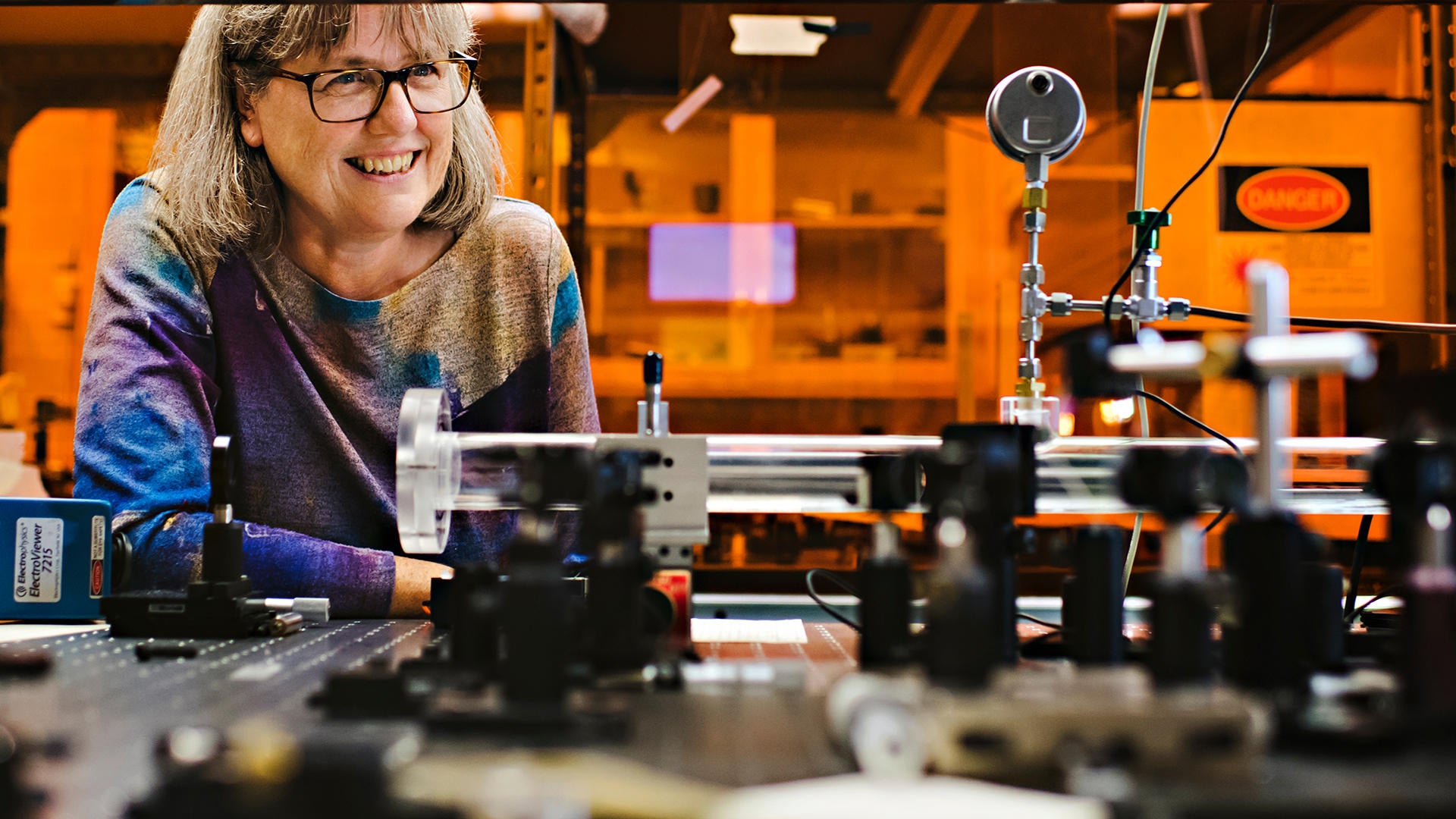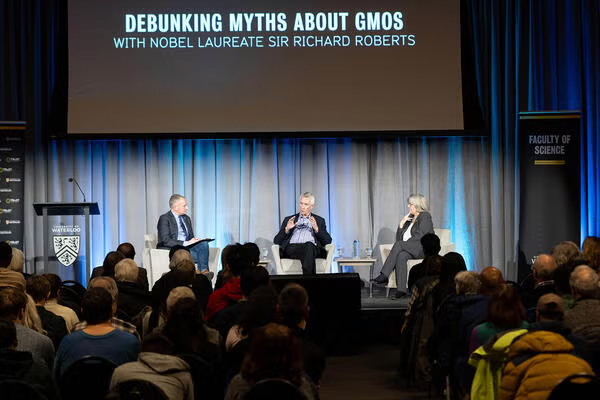
How we can turn the tide for women in science
Women are still typically the minority on academic hiring committees in science, and “majority rules.”

Women are still typically the minority on academic hiring committees in science, and “majority rules.”
By Rowan Thomson (PhD ’07) AlumnusFor the first time in 55 years, a woman has won the Nobel Prize in physics — Prof. Donna Strickland. This win has publicly highlighted that women are still under-represented in science, particularly in physics.
As a woman in physics, this lack of diversity is something that I encounter almost daily, and also something that we can take action to change.
As an undergraduate science student, I was confronted with the lack of women in science at the National Research Council (NRC) of Canada in 2001. The first day of my summer job in NRC’s now-defunct “Women in Engineering and Science” program, I was shocked looking around the lunchroom. Where were the women? The vast majority of scientists were men!

Waterloo physics professor and 2018 Nobel Laureate Donna Strickland
The situation was similar in my university studies — I only ever had two female professors.
That lack of diversity was something I grew accustomed to. A resident at Perimeter Institute for my PhD studies, I was often the only woman in the room at scientific meetings or seminars. My office was shared with four male students, and there were some jokes that I had been assigned “the secretary’s desk” and remarks about the colour of my T-shirt.
I was the only woman in the room for my PhD defence at the University of Waterloo in 2007.
When I became a faculty member in 2010, I was thrilled to be one of four women physics professors — more than 20 per cent of physics faculty at Carleton University.
This bucked the trend among physics faculty members at many universities (and this continues, as we now have five women physics professors at Carleton). But as I started teaching, the lack of gender diversity among undergraduate physics students was striking: a class of 50 students with only three women, another with no women, in my first year of teaching.
With Prof. Strickland’s win, the issue of gender diversity in physics has been brought to the fore. There is an opportunity for action.
— ROWAN THOMSON, PROFESSOR, CARLETON UNIVERSITY
As a researcher, the lack of women as invited and keynote speakers at scientific conferences continues to be discouraging.
There are certainly women giving excellent conference presentations, but they are too often overlooked when it comes to invited and keynote speakers lists. An invited or keynote speaker entry on a CV indicates respect and recognition of excellence; omission of women hinders their careers.
As a member of hiring committees within my university, I’ve witnessed some colleagues’ lack of understanding of issues related to gender diversity in science.
The philosophy of “we’ll just hire the best candidate” ignores the fact that measures of the “best” candidate are highly subjective, and often plagued with personal (sometimes unconscious) biases. Fewer women in physics and science departments results in women as the minority on hiring committees.
Not all women in physics are mothers, but motherhood opened my eyes to the many challenges at the heart of juggling family and physics. Sleep deprivation, family responsibilities and parenting are all in competition with travelling to international meetings, completing research papers and supervising students, plus preparing and delivering lectures.
Submitting research grant applications after my maternity leave, I wondered: Did the male-majority grant panels really comprehend the challenges in building my physics career while being a mother?
After Prof. Strickland’s Nobel Prize win announcement, a respected scientist remarked his surprise that another world-class, renowned male optics expert had been overlooked “maybe because he was not a woman.”

As a physicist, I have had many opportunities, and have received much support from men and women scientists alike. I have a rewarding career. But my anecdotes illustrate that, despite efforts to increase involvement of women in physics, systematic issues remain.
With Prof. Strickland’s win, the issue of gender diversity in physics has been brought to the fore. There is an opportunity for action.
We must work to raise awareness of unconscious biases and (sometimes hidden) barriers that hinder the careers of women scientists, building on recent training modules by the Canada Research Chairs Secretariat and other organizations.
Scientists should undergo training to increase their awareness of barriers facing different minorities, including women, towards developing more inclusive scientific endeavours.
Canada’s science policy leaders should develop best practices that are publicized, encouraged or even required by scientific institutions and universities.
As a start, we need clear guidelines towards achieving gender balance and diversity at scientific meetings. Some international conferences are now actively promoting diversity for their meetings, with success.
Diversity at scientific meetings aids in mentoring and retention of young women scientists through networking and role models. It enhances researcher career progression and advances research through diverse collaborations.
We must support outreach efforts that show great possibilities for careers in science for women and other minorities. With time, this will change biases that may be developed at a young age. It will show girls and students that they can play important roles in non-traditional fields.
Strickland’s Nobel Prize win can serve as a celebration of her great contributions, and a celebration of women in physics and science. It is also a call to action, as “gender diversity leads to better science.”
Rowan Thomson is a Canada Research Chair and associate professor of physics at Carleton University. Her research program involves the development and application of computational techniques and theoretical approaches to study the interactions of radiation with matter, with an emphasis on research questions relevant to radiation therapy treatments for cancer.
This article is republished from The Conversation under a Creative Commons license. Read the original article.
![]()

Read more
Here are the people and events behind some of this year’s most compelling Waterloo stories

Read more
Nobel Laureate debunks the biggest lie you’ve been told about your food — and why it’s time to trust the science

Read more
Meet the five exceptional graduate students taking the convocation stage as Class of 2024 valedictorians
The University of Waterloo acknowledges that much of our work takes place on the traditional territory of the Neutral, Anishinaabeg, and Haudenosaunee peoples. Our main campus is situated on the Haldimand Tract, the land granted to the Six Nations that includes six miles on each side of the Grand River. Our active work toward reconciliation takes place across our campuses through research, learning, teaching, and community building, and is co-ordinated within the Office of Indigenous Relations.